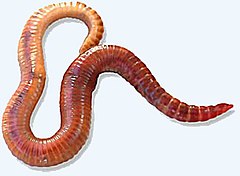




















The ultimate goal of farming is not the growing of crops, but the cultivation and perfection of human beings. - Masanobu Fukuoka




find religion! church
kiva! hyvä! iloinen! pikkumaatila
get stung! beehives
be hospitable! host-a-hive
be antisocial! facespace






















would take big scoops of the bin (by now I had worms through and through). and put it into my chicken area in a pile. Give the chickens a few minutes to harvest the worms and then I would scoop up the castings/soil and use it.
 This thread is very enlightening for all kinds of worm bin situations.
This thread is very enlightening for all kinds of worm bin situations. They had a hoop house structure with six 10-foot long worm beds, where the community's compost and trash was dumped. Also, they had rabbits in cages over the beds, which was a good idea.








jacqueg wrote:
I got about 50 worms from a bait shop, and a few more from a kitchen vermicomposter I contacted through freecycle. Yes, that's a very small number of worms, even for a small bin. But I really like the idea of building my own population, rather than buying.
Check out my Primal Prepper blog where I talk about permaculture, prepping, and the primal lifestyle... all the time! 










RitaSparrow wrote:
I want to use worms to reduce my newspaper waste and create some soil. But I don't want to use worms I can't release into my garden. Don't red wrigglers become invasive if released?
find religion! church
kiva! hyvä! iloinen! pikkumaatila
get stung! beehives
be hospitable! host-a-hive
be antisocial! facespace













RitaSparrow wrote:
I thought it was a problem in some environments - like in northern forests, where escaped fishing worms were wrecking havoc by being too voracious for the rest of the scavengers and wondered if anybody was just using the worms they already have in their gardens.
find religion! church
kiva! hyvä! iloinen! pikkumaatila
get stung! beehives
be hospitable! host-a-hive
be antisocial! facespace









Idle dreamer













tamo42 wrote:
Two issues immediately come to mind. Are you sure you got composting worms (red wigglers or European nightcrawlers)? Most bait worms that I've seen are American/Canadian nightcrawlers, which are not the same thing at all.

Located in zone 7b, South Carolina
Host of Grow Your Own: The Budding Revolution!..A weekly permaculture-based live streaming podcast with chat room!
Every Tuesday at 7p eastern, 6p central, 5p mountain, 4p pacific.
Archives and LiveStreaming at:
https://www.youtube.com/playlist?list=PLs0krKyKAZ6lhBLVCjFd15kbiWEvIBFzG





joe pacelli wrote:
If s/he got them from a bait shop, they are absolutely NOT Eisenia fetida
find religion! church
kiva! hyvä! iloinen! pikkumaatila
get stung! beehives
be hospitable! host-a-hive
be antisocial! facespace





|
If I'd had more time, I would have written a shorter letter. -T.S. Eliot such a short, tiny ad:
Freaky Cheap Heat - 2 hour movie - HD streaming
https://permies.com/wiki/238453/Freaky-Cheap-Heat-hour-movie
|


